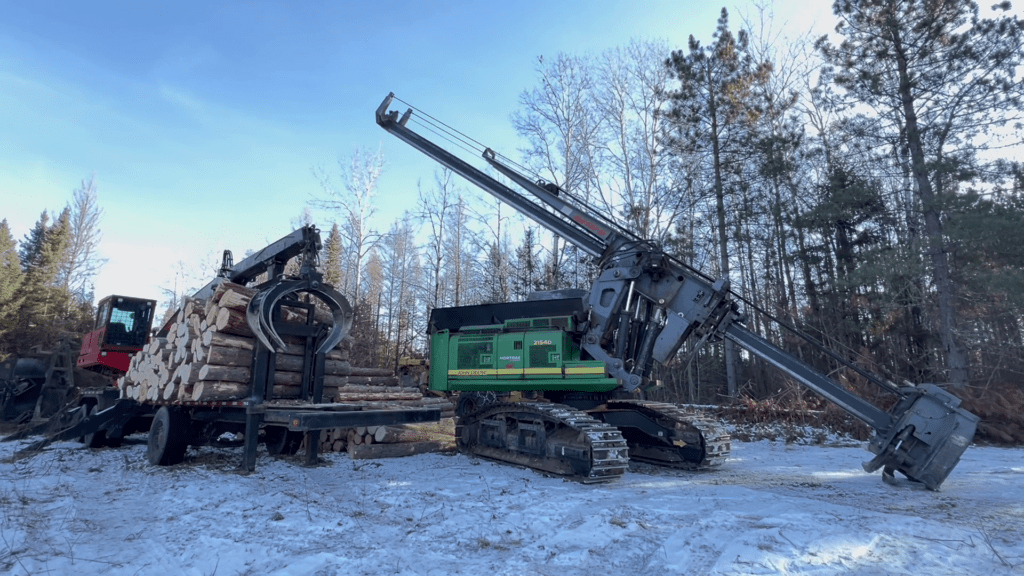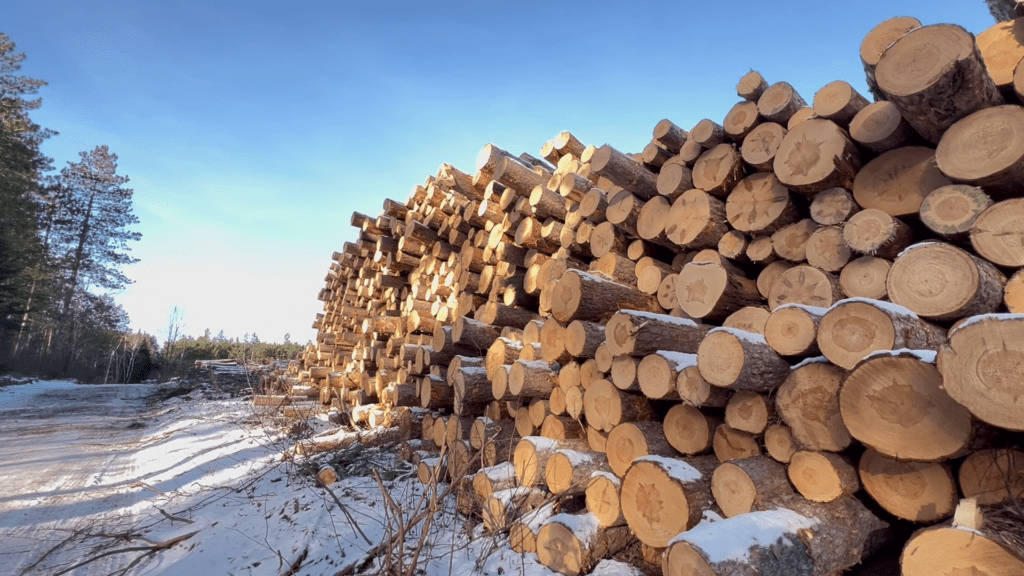One year since Blue Blizzard, forest repair continues
Most of the Northland has little to no snow on the ground, but one year ago was vastly different.
“We had a pretty significant blizzard over a few days, a lot of heavy wet snow, ice and wind that devastated a lot of a lot of acres across the state,” said Minnesota DNR Assistant Area Forestry Supervisor Chris Henkel. “The reason this storm was so devastating was the amount of moisture that was in the snow. It was as wet as snow could be and it had a kind of a blue tinge to it or some kind of color to it, and that’s why it was kind of nicknamed the Blue Blizzard.”
The ‘Blue Blizzard’ lasted from December 13th through the 16th, 2022, with over a foot of snow throughout the Northland.
“It kind of just hammered a lot of our forest lands. And, you know, we ended up with a lot of snapped off trees, stuff that was bent over, broken off on and left us a lot of work to go in and clean up and assess the damage,” said Henkel. “Across all ownerships, state, private and county lands, you know, we’re estimating 30 to 35000 acres.”
RELATED: Forestry management began analysis in March of the damage caused.
Roughly 9-10,000 acres of state land were damaged. Pine and Aspen stands were hit the hardest.
“We’re doing a lot of salvage in our mature pine stands like you’ll see here at the Aspen sites. A lot of Aspen,” said Henkel. “It’s the young stuff that really got hit, you know, the stuff that’s that 10 to 15 years old. So it’s not really a marketable product yet at that point. But we do have a lot of projects going now to kind of do some mulching or or chopping up of that stuff to just kind of restart those sites.”

Harvesting the damaged trees has a benefit of providing more product for the logging industry, but that is not the main reason for the salvage.
“We’re also trying to avoid a significant forest health risk, especially in the pine. Bark beetles can be really destructive and come in and kill a lot of pine. Even when we were out setting the stuff up this summer, you could hear him in there chewing on stuff already,” Henkel explained. “And then certainly the wildfire risk, too. That’s a lot of fuels and material available on the ground. So doing the salvage operations helps clean that stuff up, too. Capturing that stuff and getting this stuff out of the forest certainly creates a healthier forest in the long run.”

Assessments were done in late spring to identify the most damaged spots. Once the damaged trees are removed, reforestation will begin.
“We try to remind folks it’s ugly now, but we’re already starting plans to get things replanted or regrown. So in the long term it’ll look just as good as it did before,” said Henkel.